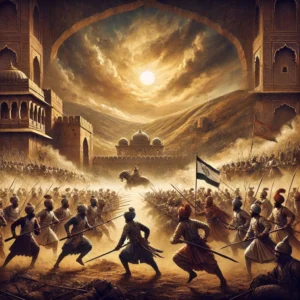
Eger Panipat is a significant historical and cultural landmark in India. It is best known for its three pivotal battles that shaped the course of Indian history, particularly in the 18th century. These battles not only defined the power dynamics of the region but also left an indelible mark on the cultural landscape.
Located in Haryana, Panipat serves as a reminder of the intricate tapestry of conflict and resilience that characterizes Indian history. The first battle in 1526 marked the beginning of Mughal dominance, while the subsequent battles in 1761 and 1857 had profound implications for the fate of empires.
Understanding the importance of Eger Panipat provides valuable insights into the historical struggles for power and the socio-political transformations in India. Readers will discover how these events continue to influence modern India today.
Historical Significance of the Third Battle of Panipat
The Third Battle of Panipat, fought on January 14, 1761, was a decisive confrontation between the Maratha Empire and the Durrani Empire led by Ahmad Shah Durrani. Its consequences reshaped the political landscape of India and marked a significant turning point in subcontinental history.
Combatants and Forces Involved
The battle involved two main factions: the Maratha Empire and the Durrani forces of Ahmad Shah. The Marathas fielded an army of approximately 70,000 to 100,000 troops, including infantry, cavalry, and artillery. In contrast, Ahmad Shah Durrani commanded around 40,000 to 60,000 soldiers, who were supplemented by local allies.
The Marathas had a diverse composition, featuring cavalry units and infantry, while Durrani’s forces included Pathans, Sindhis, and other regional groups. Both armies were skilled and experienced; however, the Maratha forces were hampered by logistical issues, including supply shortages as the battle unfolded.
Political Context Preceding the Battle
Prior to the battle, the Maratha Empire was expanding rapidly, challenging the traditional powers in northern India. Their growing influence alarmed various regional kingdoms, and alliances formed in response to their dominance.
On the other hand, Ahmad Shah Durrani aimed to reassert control over India, seeking to dethrone the Marathas and protect his interests. The power struggles and shifting alliances influenced the dynamics leading up to the clash. The political landscape was characterized by instability, with various factions maneuvering for control.
Strategies and Tactics Employed
Tactics during the battle were crucial to both sides. The Marathas utilized their mobility and cavalry strength, attempting to outmaneuver the enemy. They aimed to encircle Durrani’s forces, leveraging their larger numbers.
Conversely, Ahmad Shah’s strategy focused on holding his ground and using the terrain to his advantage. He relied on the element of surprise and the fighting spirit of his troops, executing flanking maneuvers at key moments. The battle ultimately showcased contrasting approaches to warfare, influencing military tactics in later conflicts.
Impacts of the Third Battle of Panipat
The Third Battle of Panipat had profound and lasting effects on the Indian subcontinent. These impacts can be classified into immediate aftermath and casualties, long-term geopolitical consequences, and cultural and social changes.
Immediate Aftermath and Casualties
The battle, fought on January 14, 1761, resulted in staggering casualties, with estimates suggesting that around 60,000 troops from the Maratha side perished. The Afghan forces, led by Ahmad Shah Durrani, also faced significant losses, with numbers ranging from 20,000 to 30,000.
In the immediate aftermath, the Maratha Empire faced a crisis. Their military resources diminished severely, impairing their ability to exert control over their vast territories. Moreover, the once-dominant position of the Marathas was weakened, resulting in political instability and internal strife. This period marked the beginning of a decline in their influence in northern India.
Long-Term Geopolitical Consequences
The Third Battle of Panipat altered the political landscape of India. The defeat of the Marathas opened the door for other regional powers, including the British East India Company, to expand their influence.
The weakening of the Maratha Empire led to the fragmentation of their territories, giving rise to various independent states. This scenario created a power vacuum that the British exploited, facilitating their control over much of India in the subsequent decades.
The battle also solidified Afghan power under Ahmad Shah Durrani, impacting the dynamics between Indian states and the Afghan Empire for years.
Cultural and Social Changes
Culturally, the battle influenced literature and art. Numerous poems, songs, and historical accounts emerged, celebrating valor and lamenting the losses. This era saw a shift in narratives around nationalism and identity.
Socially, the devastating losses affected the demography of the region. Communities faced displacement as populations shifted due to violence and turmoil. The battle changed societal structures, impacting caste dynamics and strengthening local chieftains who filled the power vacuum left by the weakened Marathas.
Consequently, the Third Battle of Panipat not only marked a military confrontation but also instigated significant cultural and social transitions.
Copper Companies Stock: Analyzing Investment Opportunities in 2025
Investors are increasingly interested in copper companies as demand for the metal rises, d…